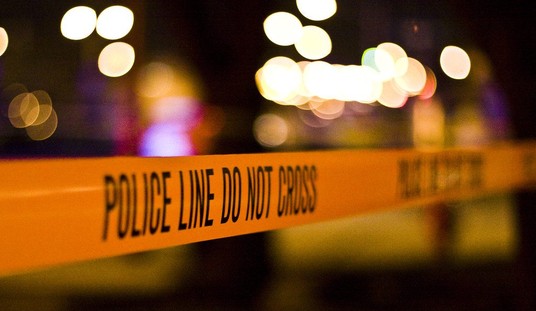I first met Steve Fisher earlier this year at the Beretta Tactical Summit, where he ran a group of gun writers through drills that showed the capability of the Beretta 1301 Tactical 12 gauge shotgun. It was a fascinating half-day class, showing me a side of shotgun shooting I’d not seen before, having only used shotguns to hunt.
Last week, Steve invited me up to Alliance, Ohio to take part in a one-day version of his Practical Shotgun class. I quickly made plans to attend, and drove up Friday for the Saturday course.
While I knew that the Alliance Police Training range was a favorite of many instructors and students, I didn’t know until I drove up to the site that it was located behind the city’s water treatment facility.
I was convinced I was in the right place for a defensive shotgun class, even before I found the actual range.

After checking in with rangemaster Joe Weyer, going over the safety plan, and the students introducing themselves—we had a mix of law enforcement, several members of the gun media, medical personnel, firearms industry company reps and regular Joes—Steve got down to business.
Shotguns, he explained, are underrated and underutilized in defensive and law enforcement contexts. Many law enforcement agencies are following a trend away from the old standard of pump-action shotguns to semi-automatic patrol rifles.
The logic often cited for the switch is that patrol rifles—almost always a variant of the AR-15 carbine—are low-recoiling, easier to adapt to female and smaller male officers, and have greater range than shotguns.
But here’s the thing.
In the real world, most agency shootings with patrol rifles occur inside 25-35 yards… shotgun range.
An officer squeezing the trigger of a patrol rifle at 25 yards is putting one high velocity .22-caliber projectile downrange.
That same officer, using a shotgun loaded with modern premium buckshot, is putting 8-9 .33 caliber projectiles (if using 00 buckshot) or 15 .30-caliber projectiles (if using #1 buckshot) downrange in a pattern that will put all projectiles on a human sized target.

Which trigger pull is more likely to have an immediate effect on the threat downrange? It seems obvious that 8-15 pellets (depending on load) is going to have a more immediate and drastic effect than a single bullet.
* * *
Our first order of business once we hit the range was patterning our shotguns. There were a mix of Remington and Mossberg pump-guns and two Beretta 1301s, with a wide range of premium to economy buckshot.
I’d be shooting “the good stuff.”
I’d seen the Federal Premium Flite Control buckshot at work before at the Beretta class in Moyock, and it is seriously good defensive shotgun ammo in the eight and nine pellet 00 buckshot loads.

Patterning your shotgun with the specific load you intend to shoot is incredibly important, because every shotgun patterns different with different loads, and that applies even when shooting shotguns that appear to be identical.
We were going to see what worked, and what didn’t work so well.
Easily the most commonly repeated bit of shotgun advice shared by gun store commandos is that you don’t have to aim a shotgun. You just point it down the hallway, pull the trigger, and the pellets will spread out to hit any bad guy coming down the hall… or so they claim.
In reality, nothing could be further from the truth.
I don’t own any home-defense/tactical shotguns, and so Steve loaned me his 1301 Tactical, since I was already familiar with the model from the Beretta event several months ago. It’s soft-shooting, fast-firing, and important to our patterning conversation, has a cylinder bore. That means it has no choke to constrict and concentrate the shot column.

We fired at out targets from the distances we’d expect in a normal self-defense or in-home engagement.
The first shot I fired from five yards was a rathole, the nine 00 pellets plowing through a single hole imperceptibly bigger than the barrel of the gun itself over the target’s right eye.
But you don’t have to aim a shotgun…
The second shot, at seven yards, left a hole the size of a plum in the target’s mouth.
But you don’t have to aim a shotgun…
At 10 yards, the group was starting to open up nicely to a fist-sized hole I’d offset to the target’s right shoulder.
But you don’t have to aim a shotgun…
The final shot with the nine-pellet Federal Premium Flite Control 00 buckshot loading to the target’s lower left chest was roughly eight inches across at 25 yards. Another shooter was firing the 15-pellet #1 Flite Control buckshot load from Federal and that was even more impressive.
But you don’t have to aim a shotgun…
Except that you clearly do, unless you want miss your target completely.

Not everyone was using the top-of-the-line buckshot, of course. We had shooters using non-plated, soft lead 00 pellets with crude wads didn’t pattern well at all in any gun we tried. You can see the result of these economy loads in the photo below.
The five yard shot from the military load was a large hole the size of plum, as the wadding was just starting to separate.
But you don’t have to aim a shotgun..
By seven yards, the load’s pattern was rapidly falling apart, and barely stayed in the target’s head.
But you don’t have to aim a shotgun…
After that, the pattern went completely down the toilet.
The 10 yard shot aimed at the upper chest saw pellets that went over the top of the target and just clipped the paper, and around the target left and right.
But you don’t have to aim a shotgun…
At 25 yards, the pellets aimed at the chest were all up and down the torso.
But you don’t have to aim a shotgun…
Except that you clearly do, as even this lowest-common denominator ammo that patterned horribly still had to be aimed to get hits.

Clearly, shotguns can be devastating close-range weapons, but you have to pattern with different loads to find out which load works the best in your shotgun. Once you have your best load figured out, buy as much as you can afford and stack it deep.
* * *
Like other top-tier instructors, Steve does a lot of testing and a lot of research. In all of the nationwide research he’s done, he’s been able to find precisely one example where a home defender or a law enforcement officer armed with a shotgun filled with buckshot had to fire more than two shots after making a well-aimed torso shot.
That one outlier was the North Hollywood Shootout, where the suspects wore heavy full-body armor.
In the majority of documented instances, a single good torso hit with a load of 00 buckshot ended the threat immediately, and in a substantial number of cases where two shots were fired, that second shot was fired because standard training doctrine is to fire two shots before pausing to reassess the situation.
Compare that against handguns or even patrol rifles, where offenders will sometimes take 5-8 rounds or more before being knocked out of the fight.
When it comes to defending a barricaded position, defending a home, or conducting a CQB raid, a well-aimed shotgun blast with a quality buckshot load will bring the fight to an end faster than almost any other small arm.
As someone (maybe Steve) said early in the day, a handgun or a rifle will kill an attacker, but a shotgun kills their soul.







Join the conversation as a VIP Member